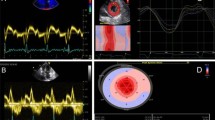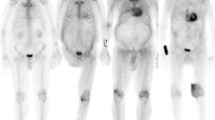Abstract
The gold standard for diagnosis of cardiac amyloidosis (CA) is endomyocardial biopsy showing Congo red staining followed by mass spectroscopy, but the diagnosis can also be made with high certainty by demonstration of typical cardiac imaging features along with amyloid on biopsy of another involved organ. The use of cardiac imaging techniques to detect amyloid deposits may frequently obviate the need for invasive methods in order to ascertain the presence, and potentially the type, of amyloid deposition.
Purpose of Review
We aim to review the evidence behind the development of novel positron emission tomography (PET) radiotracers for demonstrating cardiac amyloid deposition and potentially distinguishing between light-chain (AL) or transthyretin (ATTR) cardiac amyloidosis.
Recent Findings
Multiple recent studies have shown that thioflavin-analogue tracers such as18F-florbetapir, 18F-florbetaben, 18F-flutemetamol, and 11C-labeled Pittsburg Compound-B (PiB) may be able to fulfill the unmet need of elucidating the presence of amyloid deposition in the heart. Because they bind to the beta-pleated motif of the amyloid fibril due to their similarity to the thioflavin structure, they could potentially be used to image CA (Table 1).
Summary
The use of PET amyloid radiotracers shows promise; however, further data is needed to define their overall accuracy and additive value to the care of patients with suspected systemic and/or cardiac amyloidosis.

Similar content being viewed by others
References
Papers of particular interest, published recently, have been highlighted as: • Of importance
Falk RH, Alexander KM, Liao R, Dorbala S. AL (light-chain) cardiac amyloidosis. J Am Coll Cardiol. 2016;68(12):1323–41. https://doi.org/10.1016/j.jacc.2016.06.053.
Gallegos C, Miller EJ. Use of fluorine-18 sodium fluoride for the diagnosis of transthyretin cardiac amyloidosis: the birth of a new technique. J Nucl Cardiol. 2018;25(5):1568–70. https://doi.org/10.1007/s12350-017-0847-6.
Kyriakou P, Mouselimis D, Tsarouchas A, Rigopoulos A, Bakogiannis C, Noutsias M, et al. Diagnosis of cardiac amyloidosis: a systematic review on the role of imaging and biomarkers. BMC Cardiovasc Disord. 2018;18(1):221. https://doi.org/10.1186/s12872-018-0952-8.
Gertz MA, Benson MD, Dyck PJ, Grogan M, Coelho T, Cruz M, et al. Diagnosis, prognosis, and therapy of transthyretin amyloidosis. J Am Coll Cardiol. 2015;66(21):2451–66. https://doi.org/10.1016/j.jacc.2015.09.075.
Coelho T, Maia LF, Martins da Silva A, Waddington Cruz M, Planté-Bordeneuve V, Lozeron P, et al. Tafamidis for transthyretin familial amyloid polyneuropathy. Neurology. 2012;79(8):785. https://doi.org/10.1212/WNL.0b013e3182661eb1.
Dorbala S, Bokhari S, Miller EJ, Bullock-Palmer RP, Soman P, Thompson RC (2019) 99mTechnetium-pyrophosphate imaging for transthyretin cardiac amyloidosis. American Society of Nuclear Cardiology Practice Points Webpage. https://www.asnc.org/content.asp?contentid=182.
Gillmore JD, Maurer MS, Falk RH, Merlini G, Damy T, Dispenzieri A, et al. Nonbiopsy diagnosis of cardiac transthyretin amyloidosis. Circulation. 2016;133(24):2404–12. https://doi.org/10.1161/circulationaha.116.021612.
Vandenberghe R, Van Laere K, Ivanoiu A, Salmon E, Bastin C, Triau E, et al. 18F-flutemetamol amyloid imaging in Alzheimer disease and mild cognitive impairment: a phase 2 trial. Ann Neurol. 2010;68(3):319–29. https://doi.org/10.1002/ana.22068.
• Dorbala S, Vangala D, Semer J, Strader C, Bruyere JR Jr, Di Carli MF, et al. Imaging cardiac amyloidosis: a pilot study using (1)(8)F-florbetapir positron emission tomography. Eur J Nucl Med Mol Imaging. 2014;41(9):1652–62. https://doi.org/10.1007/s00259-014-2787-6. First study to show the feasibility of18F-Florbetapir for imaging cardiac amyloidosis.
Law WP, Wang WY, Moore PT, Mollee PN, Ng AC. Cardiac amyloid imaging with 18F-florbetaben PET: a pilot study. J Nucl Med. 2016;57(11):1733–9. https://doi.org/10.2967/jnumed.115.169870.
Antoni G, Lubberink M, Estrada S, Axelsson J, Carlson K, Lindsjö L, et al. In vivo visualization of amyloid deposits in the heart with 11C-PIB and PET. J Nucl Med. 2013;54(2):213–20. https://doi.org/10.2967/jnumed.111.102053.
Singh V, Falk R, Di Carli MF, Kijewski M, Rapezzi C, Dorbala S. State-of-the-art radionuclide imaging in cardiac transthyretin amyloidosis. J Nucl Cardiol. 2019;26(1):158–73. https://doi.org/10.1007/s12350-018-01552-4.
• Klunk WE, Engler H, Nordberg A, Wang Y, Blomqvist G, Holt DP, et al. Imaging brain amyloid in Alzheimer’s disease with Pittsburgh compound-B. Ann Neurol. 2004;55(3):306–19. https://doi.org/10.1002/ana.20009. First-in-human study of the thioflavin PET tracers in the the diagnosis of brain amyloid.
Benadiba M, Luurtsema G, Wichert-Ana L, Buchpigel CA, Busatto FG. New molecular targets for PET and SPECT imaging in neurodegenerative diseases. Braz J Psychiatry. 2012;34(Suppl 2):S125–36. https://doi.org/10.1016/j.rbp.2012.07.002.
Lee SP, Lee ES, Choi H, Im HJ, Koh Y, Lee MH, et al. 11C-Pittsburgh B PET imaging in cardiac amyloidosis. J Am Coll Cardiol Img. 2015;8(1):50–9. https://doi.org/10.1016/j.jcmg.2014.09.018.
Pilebro B, Arvidsson S, Lindqvist P, Sundström T, Westermark P, Antoni G, et al. Positron emission tomography (PET) utilizing Pittsburgh compound B (PIB) for detection of amyloid heart deposits in hereditary transthyretin amyloidosis (ATTR). J Nucl Cardiol. 2018;25(1):240–8. https://doi.org/10.1007/s12350-016-0638-5.
Villemagne VL, Ong K, Mulligan RS, Holl G, Pejoska S, Jones G, et al. Amyloid imaging with (18)F-florbetaben in Alzheimer disease and other dementias. J Nucl Med. 2011;52(8):1210–7. https://doi.org/10.2967/jnumed.111.089730.
Yao T, Li Z. Facile synthesis of TEG-substituted 4-(N-methyl-N-Boc-amino)styrylpyridine and PET imaging agent [F]florbetapir ([F]AV-45). Synth Commun. 2018;48(4):422–7. https://doi.org/10.1080/00397911.2017.1404107.
Clark CM, Schneider JA, Bedell BJ, Beach TG, Bilker WB, Mintun MA, et al. Use of florbetapir-PET for imaging beta-amyloid pathology. JAMA. 2011;305(3):275–83. https://doi.org/10.1001/jama.2010.2008.
Yang L, Rieves D, Ganley C. Brain amyloid imaging--FDA approval of florbetapir F18 injection. N Engl J Med. 2012;367(10):885–7. https://doi.org/10.1056/NEJMp1208061.
• Park M-A, Padera RF, Belanger A, Dubey S, Hwang DH, Veeranna V, et al. 18F-Florbetapir binds specifically to myocardial light chain and transthyretin amyloid deposits: autoradiography study. Circ Cardiovasc Imaging. 2015;8(8). https://doi.org/10.1161/CIRCIMAGING.114.002954. Cross-sectional study demonstrating binding of18F-Florbetapir to cardiac amyloid by autoradiography.
Ehman EC, El-Sady MS, Kijewski MF, Khor YM, Jacob S, Ruberg FL, et al. Early detection of multiorgan light-chain amyloidosis by whole-body (18)F-florbetapir PET/CT. J Nucl Med. 2019;60(9):1234–9. https://doi.org/10.2967/jnumed.118.221770.
Rowe CC, Ackerman U, Browne W, Mulligan R, Pike KL, O’Keefe G, et al. Imaging of amyloid beta in Alzheimer’s disease with 18F-BAY94-9172, a novel PET tracer: proof of mechanism. Lancet Neurol. 2008;7(2):129–35. https://doi.org/10.1016/s1474-4422(08)70001-2.
Baratto L, Park SY, Hatami N, Gulaka P, Vasanawala S, Yohannan TK, et al. (18)F-florbetaben whole-body PET/MRI for evaluation of systemic amyloid deposition. EJNMMI Res. 2018;8(1):66. https://doi.org/10.1186/s13550-018-0425-1.
Kircher M, Ihne S, Brumberg J, Morbach C, Knop S, Kortum KM, et al. Detection of cardiac amyloidosis with (18)F-florbetaben-PET/CT in comparison to echocardiography, cardiac MRI and DPD-scintigraphy. Eur J Nucl Med Mol Imaging. 2019;46(7):1407–16. https://doi.org/10.1007/s00259-019-04290-y.
Leuzy A, Savitcheva I, Chiotis K, Lilja J, Andersen P, Bogdanovic N, et al. Clinical impact of [(18)F]flutemetamol PET among memory clinic patients with an unclear diagnosis. Eur J Nucl Med Mol Imaging. 2019;46(6):1276–86. https://doi.org/10.1007/s00259-019-04297-5.
• Dietemann S, Nkoulou R. Amyloid PET imaging in cardiac amyloidosis: a pilot study using 18F-flutemetamol positron emission tomography. Ann Nucl Med. 2019;33(8):624–8. https://doi.org/10.1007/s12149-019-01372-7. Pilot study using18F-flutemetamol for evaluation of cardiac amyloidosis.
Morgenstern R, Yeh R, Castano A, Maurer MS, Bokhari S. 18Fluorine sodium fluoride positron emission tomography, a potential biomarker of transthyretin cardiac amyloidosis. J Nucl Cardiol. 2018;25(5):1559–67. https://doi.org/10.1007/s12350-017-0799-x.
Van Der Gucht A, Galat A, Rosso J, Guellich A, Garot J, Bodez D, et al. [18F]-NaF PET/CT imaging in cardiac amyloidosis. J Nucl Cardiol. 2016;23(4):846–9. https://doi.org/10.1007/s12350-015-0287-0.
Gagliardi C, Tabacchi E, Bonfiglioli R, Diodato S, Nanni C, Guidalotti P, et al. Does the etiology of cardiac amyloidosis determine the myocardial uptake of [18F]-NaF PET/CT? J Nucl Cardiol. 2017;24(2):746–9. https://doi.org/10.1007/s12350-016-0457-8.
Martineau P, Finnerty V, Giraldeau G, Authier S, Harel F, Pelletier-Galarneau M. Examining the sensitivity of 18F-NaF PET for the imaging of cardiac amyloidosis. J Nucl Cardiol. 2019:1–10. https://doi.org/10.1007/s12350-019-01675-2.
Author information
Authors and Affiliations
Corresponding author
Ethics declarations
Conflict of Interest
Cesia Gallegos declares no conflict of interest.
Edward J. Miller reports grants from Bracco, Eidos, Alnylam, and Pfizer; and has been a consultant for Bracco, Pfizer, GE, and Alnylam.
Human and Animal Rights and Informed Consent
This article does not contain any studies with human or animal subjects performed by any of the authors.
Additional information
Publisher’s Note
Springer Nature remains neutral with regard to jurisdictional claims in published maps and institutional affiliations.
This article is part of the Topical Collection on Nuclear Cardiology
Rights and permissions
About this article
Cite this article
Gallegos, C., Miller, E.J. Advances in PET-Based Cardiac Amyloid Radiotracers. Curr Cardiol Rep 22, 40 (2020). https://doi.org/10.1007/s11886-020-01284-3
Published:
DOI: https://doi.org/10.1007/s11886-020-01284-3




